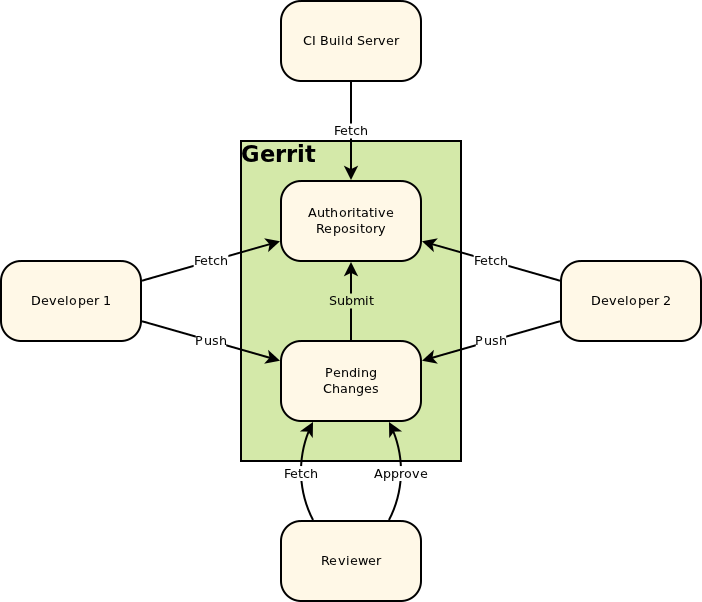To understand how Gerrit fits into and enhances the developer workflow, consider a typical project. This project has a central source repository, which serves as the authoritative copy of the project’s contents.

Gerrit takes the place of this central repository and adds an additional concept: a store of pending changes.

With Gerrit, when a developer makes a change, it is sent to this store of pending changes, where other developers can review, discuss and approve the change. After enough reviewers grant their approval, the change becomes an official part of the codebase.
In addition to this store of pending changes, Gerrit captures notes and comments about each change. These features allow developers to review changes at their convenience, or when conversations about a change can’t happen face to face. They also help to create a record of the conversation around a given change, which can provide a history of when a change was made and why.
Like any repository hosting solution, Gerrit has a powerful access control model. This model allows you to fine-tune access to your repository.
Part of Gerrit Code Review